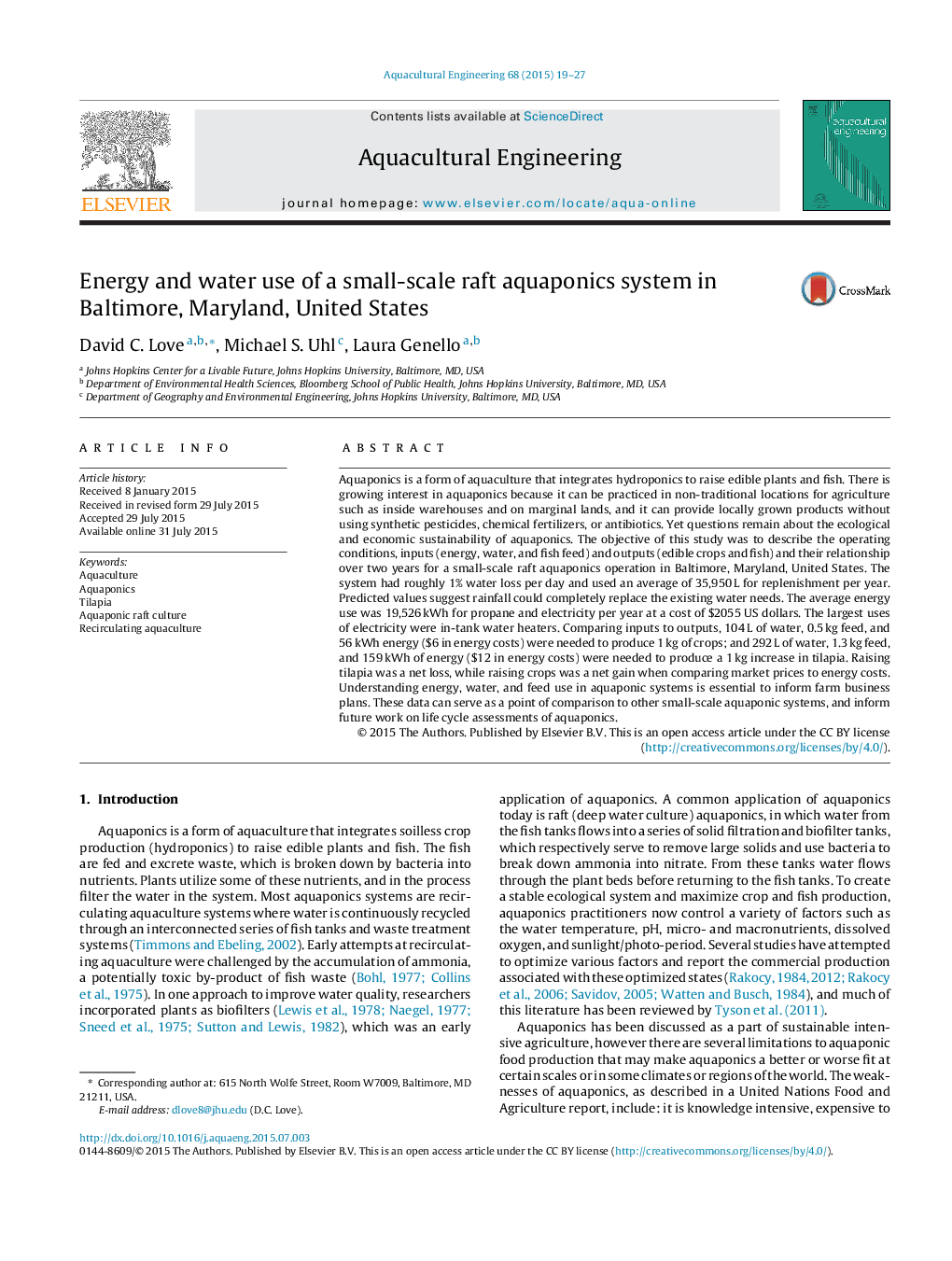| کد مقاله | کد نشریه | سال انتشار | مقاله انگلیسی | نسخه تمام متن |
|---|---|---|---|---|
| 6381267 | 1625702 | 2015 | 9 صفحه PDF | دانلود رایگان |
- Inputs and outputs of a small-scale raft aquaponics system were measured.
- Edible plants require fewer inputs than fish and are the profit center.
- Small-scale aquaponics needs further study related to resource use.
Aquaponics is a form of aquaculture that integrates hydroponics to raise edible plants and fish. There is growing interest in aquaponics because it can be practiced in non-traditional locations for agriculture such as inside warehouses and on marginal lands, and it can provide locally grown products without using synthetic pesticides, chemical fertilizers, or antibiotics. Yet questions remain about the ecological and economic sustainability of aquaponics. The objective of this study was to describe the operating conditions, inputs (energy, water, and fish feed) and outputs (edible crops and fish) and their relationship over two years for a small-scale raft aquaponics operation in Baltimore, Maryland, United States. The system had roughly 1% water loss per day and used an average of 35,950Â L for replenishment per year. Predicted values suggest rainfall could completely replace the existing water needs. The average energy use was 19,526Â kWh for propane and electricity per year at a cost of $2055 US dollars. The largest uses of electricity were in-tank water heaters. Comparing inputs to outputs, 104Â L of water, 0.5Â kg feed, and 56Â kWh energy ($6 in energy costs) were needed to produce 1Â kg of crops; and 292Â L of water, 1.3Â kg feed, and 159Â kWh of energy ($12 in energy costs) were needed to produce a 1Â kg increase in tilapia. Raising tilapia was a net loss, while raising crops was a net gain when comparing market prices to energy costs. Understanding energy, water, and feed use in aquaponic systems is essential to inform farm business plans. These data can serve as a point of comparison to other small-scale aquaponic systems, and inform future work on life cycle assessments of aquaponics.
Journal: Aquacultural Engineering - Volume 68, September 2015, Pages 19-27
